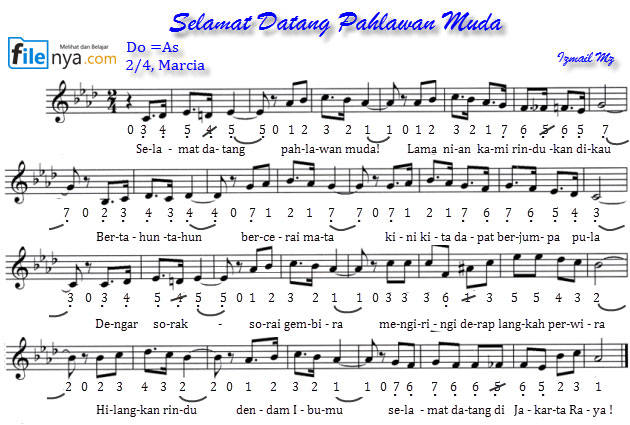


At night, singing in the pupuh kinanti melodic formula, she says: My baby, my soul/go to sleep/my baby in the cradle/worry not of the evening/ … /pray that I will come home soon/even though we are far apart/our hearts are connected ( Anaking jiwa anaking/geura bobo/anaking di ayun ambing/ ulah rungsing tepung jeung peuting/ … /ngadu’a Ema hidep enggal mulang/sanajan urang paanggang/hate mah paanjang anjang). In a relatively modern folk song also called Ayun Ambing, we hear the story of a mother living abroad as a migrant worker, away from her baby. The term “ayun ambing,” which literally means “in the cradle,” is used by the Sundanese people of West Java to refer to lullabies. Watch this video for a BBSS Choir’s rendition of the lullaby Lela Ledhung:
#Chord nina bobok full
It goes: “ T ak lela, lela, lela ledhung/hush, don’t cry, baby/my beautiful baby/your cries take away the beauty of your face/I shall push you to a noble life/be a prominent person/glorify your parents’ names/be a champion for your people” (in Javanese: T ak lela, lela, lela ledhung /cep meneng aja pijer nangis /anakku sing bagus (or ayu, depending whether the baby is a boy or a girl) rupane /yen nangis ndhak ilang baguse (or ayune) / tak gadhang bisa urip mulya /dadia satriya (or wanita) utama /ngluhurke asmane wong tuwa /dadia pandhekaring bangsa).Ī tinge of threat, however, can still be felt in the lines that go: “See that full moon/it looks like a scary giant/eyeing on crying babies” ( K ae mbulane ndadari /kaya buta nggegilani /lagi nggoleki cah nangis). The Central Javanese people have Lela Ledhung, whose lyrics describe a parent troubled by his or her crying baby. If the Karonese and the Indonesian-speaking population seem to resort to threats to put their babies to sleep, the Central and West Javanese infuse their lullabies with hopes and prayers. “Bobo,” or “bobok” is an informal Indonesian word often used to replace “tidur,” meaning sleep. The rarely used lelabuai, from the Javanese non-definitive lela and the Indonesian buaian (cradle), means the same thing. Interestingly, Nana Bobo is also the title of an Italian lullaby. “Nina” is generally perceived as the name of a baby girl being hush-a-byed to slumber.

Many Indonesians are familiar with the word ninabobo as the common translation for “lullaby.” The word comes from a song parents would chant softly to get their babies to sleep: Nina bobo, oh Nina bobo/kalau tidak bobo digigit nyamuk (Go to sleep, Nina, otherwise the mosquitoes will bite). Watch this Youtube version to get an idea (the extensive instrumental parts seem a bit much for a lullaby perhaps). The lyrics are in modern Indonesian, and tell of a mother trying to put her crying baby to its forty winks while the father is away. Still in Sumatra, the song Dodoi Si Dodoi is a famous lullaby among the Melayu-speaking people. Usually heard during traditional ceremonies or as a playful exchange between youths, hahiwang can also be a baby’s a pre-snooze chant. The people of Lampung, the southernmost province on Sumatra island, sing poems called the hahiwang. She never told me what the first line meant, but together this lullaby implies: “Go to sleep, otherwise the mice will munch at your teeth.” It was a two-line song in the Karonese language of the Batak Karo people of North Sumatera: Uwi kola kati/ipenna karat menci. When I was a little boy, before I went to sleep, I would lie on my grandmother’s big belly while she chanted me a lullaby.


 0 kommentar(er)
0 kommentar(er)
